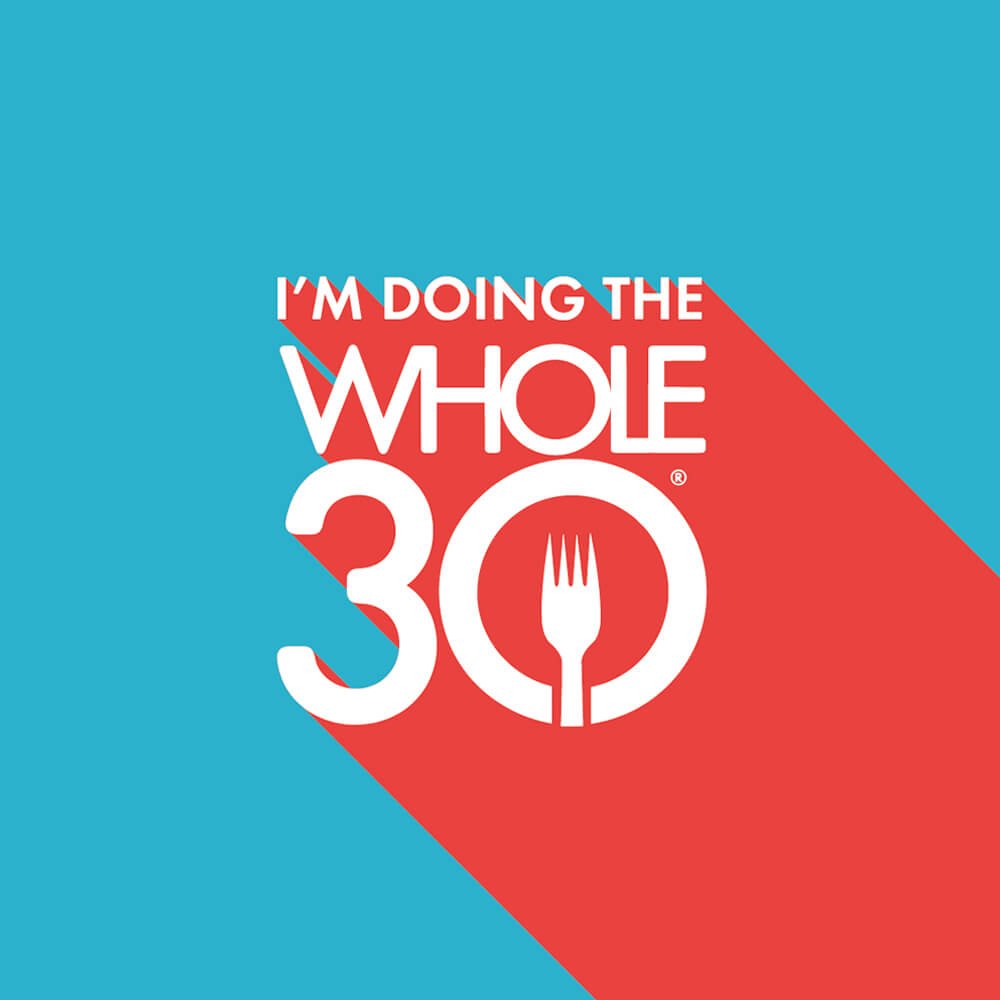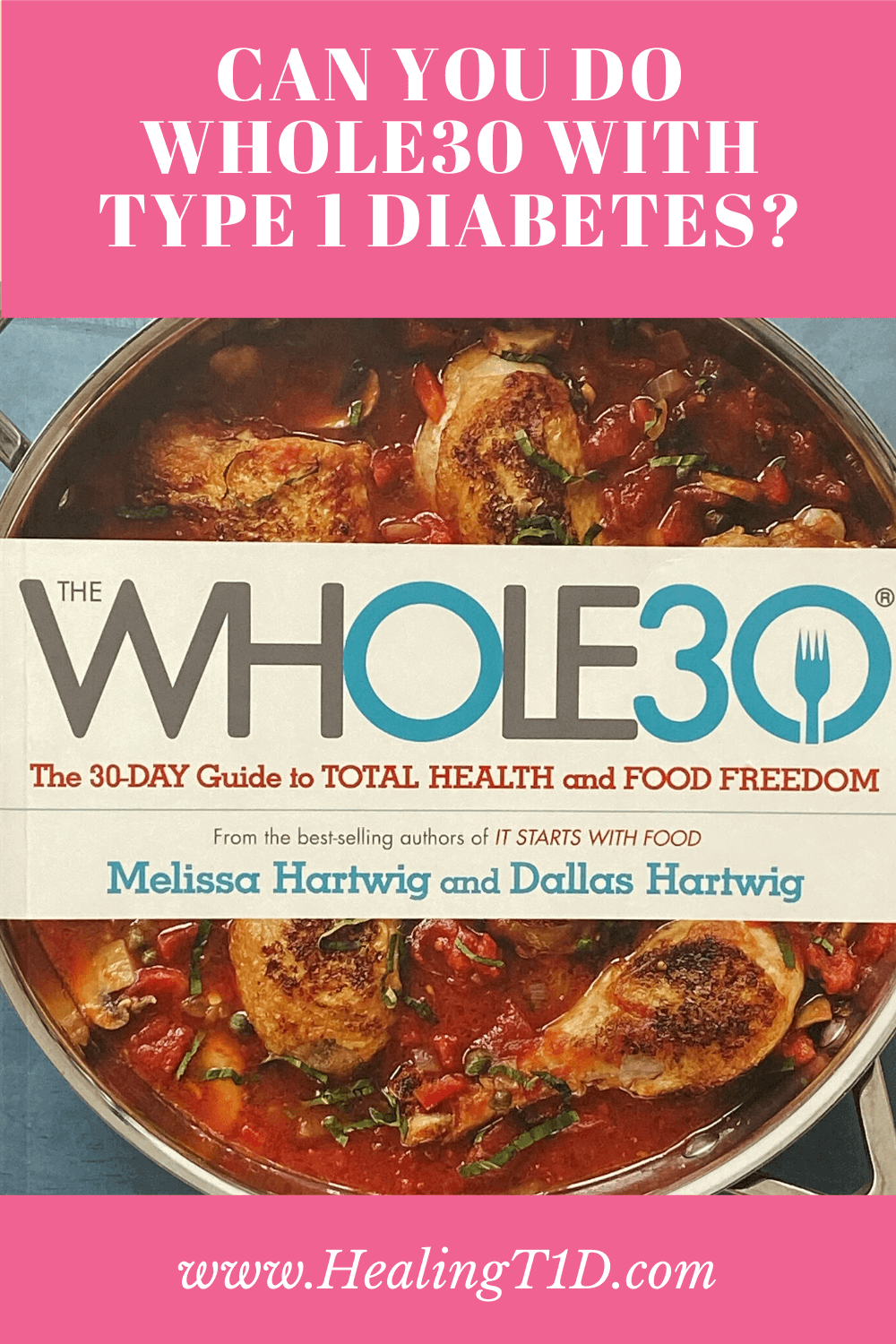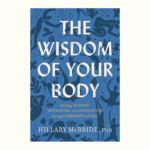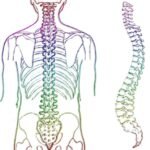My First Forays Into The Healing Potential Of Food
The content of the HealingT1D website is for educational and information purposes only. It does not contain medical advice. The contents of this website are not intended to substitute for professional medical advice, diagnosis or treatment. Please always consult with your doctor, physician, or other qualified healthcare professional before making any adjustments to your routine or healthcare regime. HealingT1D and all associated with it will not be held liable for any risks or issues associated with using or acting upon the information on this site.
Summary: This article explores the Whole30 nutritional approach as a baseline from which to start healing. Food is used as the building blocks of health and therefore wholesome, nutritious food, stripped of processed products and potential inflammatory agents, intuitively makes sense as a place to start.


Nutrition First…
Kelly Turner discusses how diet (the food you eat NOT calorie restriction) as one of the key factors for healing (see my blog post here). This intuitively makes sense to me… After all, what I eat is used to manufacture each cell in my body! However, our body only replaces itself every seven to ten years. Therefore, I have chosen to make diet my first priority so my body has more time to create me some sparkly new pancreatic cells made of good nutrition!
What Is Whole30?
Whole30 is a dietary programme that promises ‘total health and food freedom’ at the end of a 30-day period of restriction and elimination. It requires elimination of all foods that the creators Melissa and Dallas Hartwig have identified that ‘promote unhealthy cravings and habits, disrupt the metabolism, damage your digestive tract and burden your immune system’ [1]. These include, but are not limited to, dairy, sugar, wheat and legumes.
By following Whole30, the authors suggest that I am committing to ‘an anti-inflammatory diet, designed to calm an overactive immune system and reduce or eliminate the symptoms of inflammation’. This diet therefore appears to offer an opportunity to address the inflammation that is often associated with T1D (see my blog post here). Having had a doctor suggest, but not confirm, that I may have gastroparesis and obviously having issues with my immune system (hello T1D!) and potentially also inflammation (although, in my case, not successfully measured, see here), this programme seems to be a natural fit.
Why Am I Doing Whole30?
As I discussed in my posts on ‘What Is Type 1 Diabetes?‘ and ‘Allostatic Load‘, I am conceptualising my T1D as resulting from an overload of stress and strain on the body. I believe that the factors contributing to this build-up are multifaceted and are likely to include:
- emotional factors (such as trauma, emotional stress, anxiety and depression),
- physical factors (such as oscillating blood sugars, excess body fat, poor nutrition and insufficient exercise),
- environmental factors (such as environmental toxins and a disordered home environment) and
- spiritual factors.
Whole30 addresses the physical factor of ‘poor nutrition’. It gives a method to strip my diet back to its most basic components from which I can then rebuild a diet (in the not-restricting-calories sense!) that is healthful and supportive of my body’s healing.
I am starting my path to healing with diet because my diet builds my body. Every item of food I eat become the building blocks for each molecule in my system. Therefore, if I want a better output, I need a better input. If I want healthy pancreatic cells, I need to offer healthy raw materials from which they can be manufactured. I might be able to change my mind in an instant (and, believe me, if you ask my husband he will confirm that I often do!). However, changing my body takes more time. The sooner I change my nutrition, the sooner a better body is built. This is why I’m tackling my nutrition first.
Whole30 With Type 1 Diabetes
I anticipate that doing Whole30 as a Type 1 Diabetic will be even more challenging than for the average non-diabetic. There are three reasons for this.
Firstly, Whole30 often results in a reduction in the amount of carbohydrates that someone eats, purely as a result of eating more natural and fewer processed foods. There is less (no!) added sugar. I am therefore anticipating a reduction in the amount of insulin I am likely to need and/or a risk of increased hypo’s as I adjust my insulin intake. I will also be eating different food items that are also likely to affect my insulin input.
Secondly, I think I am going to have issues if I have any hypo’s over the next month. Sugar is out. So my usual dextrose tablets and a snack is not Whole30-compliant. Fruit is permitted but the Hartwigs recommend that this is not consumed on its own. So that’s not a solution either. In my search for answers, I came across a podcast by Rob Howe at ‘Diabetics Doing Things’. He is a Type 1 Diabetic who successfully completed the Whole30. In this episode, he discusses the tactics he used to do it, including how he addressed hypo’s using Whole30-compliant foods. While they may not be fully Whole30-compliant in the strictest sense, I will use these (or alternatives) if it means keeping my blood sugars at a healthy level. My health, after all, is the most important factor here.
Thirdly, Melissa and Dallas Hartwig kindly informed me in their book ‘The Whole30: The 30-Day Guide to Total Health and Food Freedom’ that those with autoimmune disorders can take longer than 30 days to feel the beneficial effects of the programme. They stated that it could possibly be even 60 or 90 days! So I’m going to have to tackle it with a different mindset… Not just counting down the 30 days till I can start eating ‘normal’ foods again!

The Preparation Phase
Preparing for Whole30 is even more crucial as a Type 1 Diabetic. I can’t just grab those glucose tablets or Jelly Babies out of the cupboard when my blood sugars drop. And I’m also not a fan of just randomly adjusting insulin levels in response to whatever random number of carbohydrates end up on my plate at mealtime. In other words… I’m a planner! So I took this phase very seriously! My planning consisted of:
- Planning 7 breakfast options, 7 lunch options and 7 dinner options that I could easily make and that I would like (or at least wouldn’t mind) eating. So, if everything went wrong, I always had a meal option (or a week of meal options!) to fall back on.
- Reading and reading and reading (did I mention reading?!) labels of all the food items in my home. OMG, most of it I won’t be eating!
- Planning my food shops into my diary for the entire 30 days.
- Stocking up on simple meats, plus fruits and vegetables
- Batch cooking Whole30-compliant soups that I froze in separate containers in my freezer, ready to be grabbed and defrosted at a moment’s notice.
- Made some sausages using the recipe in the Whole30 book and put them in the freezer in individual portion sizes.

The Reintroduction Phase
Upon completion of Whole30, a period of reintroduction of the previously non-permitted foods is required. For me, the reintroduction phase of the Whole30 programme is key. I know people seem to skip this phase but I anticipate that this will be the time when I gain the most from the programme. Whole30 states that you need to reintroduce foods one at a time so you can feel what each one does to your body. For me, this is the most crucial bit. It acknowledges the importance of being guided by my intuition (see my post here on intuition) to work out what feels best for my body. If I don’t feel good after eating a food, it is my body’s way of telling me that that particular food is leading me away from my best possible health. So why would I want to eat it?
As I said above, the concept of ‘Allostatic Load‘ is crucial. If I keep chipping away at my body’s health with foods that are not healthful, I am the one losing out. So I need to know which foods are chipping away at my health. The reintroduction does this for me (although, as the critics argue, it is not in a scientifically-assessed way). However, for me, I would prefer to trust my body’s intuition to lead me to health rather than the results writing on a doctor’s pad. Getting my body naturally feeling as good as possible definitely feels like something I should be doing!
Following a successful and complete reintroduction phase, I will be armed with the knowledge of what my body can and can’t process. This will then be the basis of my nutrition going forward. Interestingly, this idea of adjusting my nutrition for my health fits nicely with Kelly Turner’s findings on healing cancer (see my blog post here). Kelly Turner found that radically changing your diet is key to healing. Like Whole30, she names greatly reducing or eliminating sugar, meat, dairy and refined foods, as well as greatly increasing vegetable and fruit intake, as key [2].
Watch out for my forthcoming updates as I make way through my month of Whole30!


GET HEALINGT1D’S FUTURE ARTICLES IN YOUR INBOX!
Get the latest musings and findings straight to your email inbox.

Natalie is a blogger with Type 1 Diabetes. Natalie's special gifts are questioning the status quo and being a rebel. She is using these gifts to question medical 'knowledge' and find a true cure for Type 1 Diabetes.
Recent Comments:
- Sandra on Nutrition Update
- latestModapks on Daniel Darkes
- Natalie Leader on Daniel Darkes
- Senna on Daniel Darkes
- Sandra on High Blood Pressure




